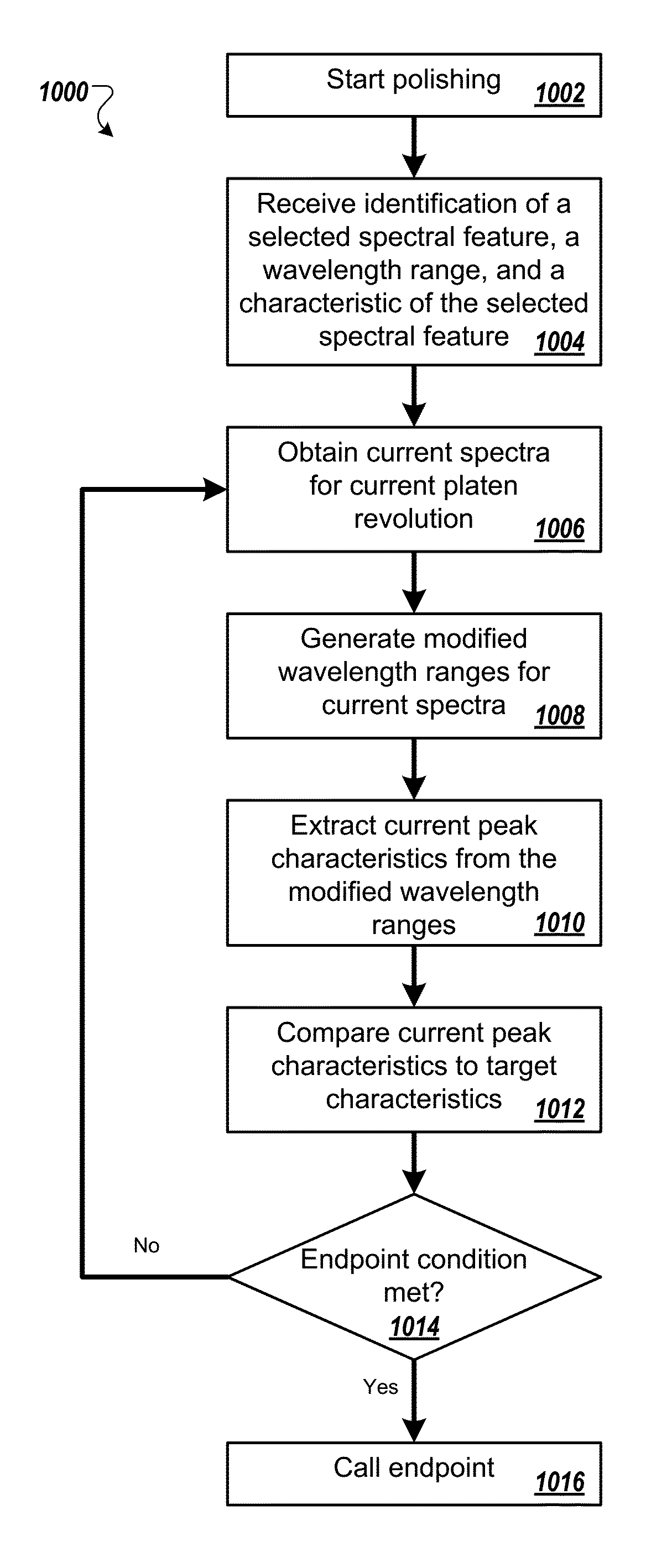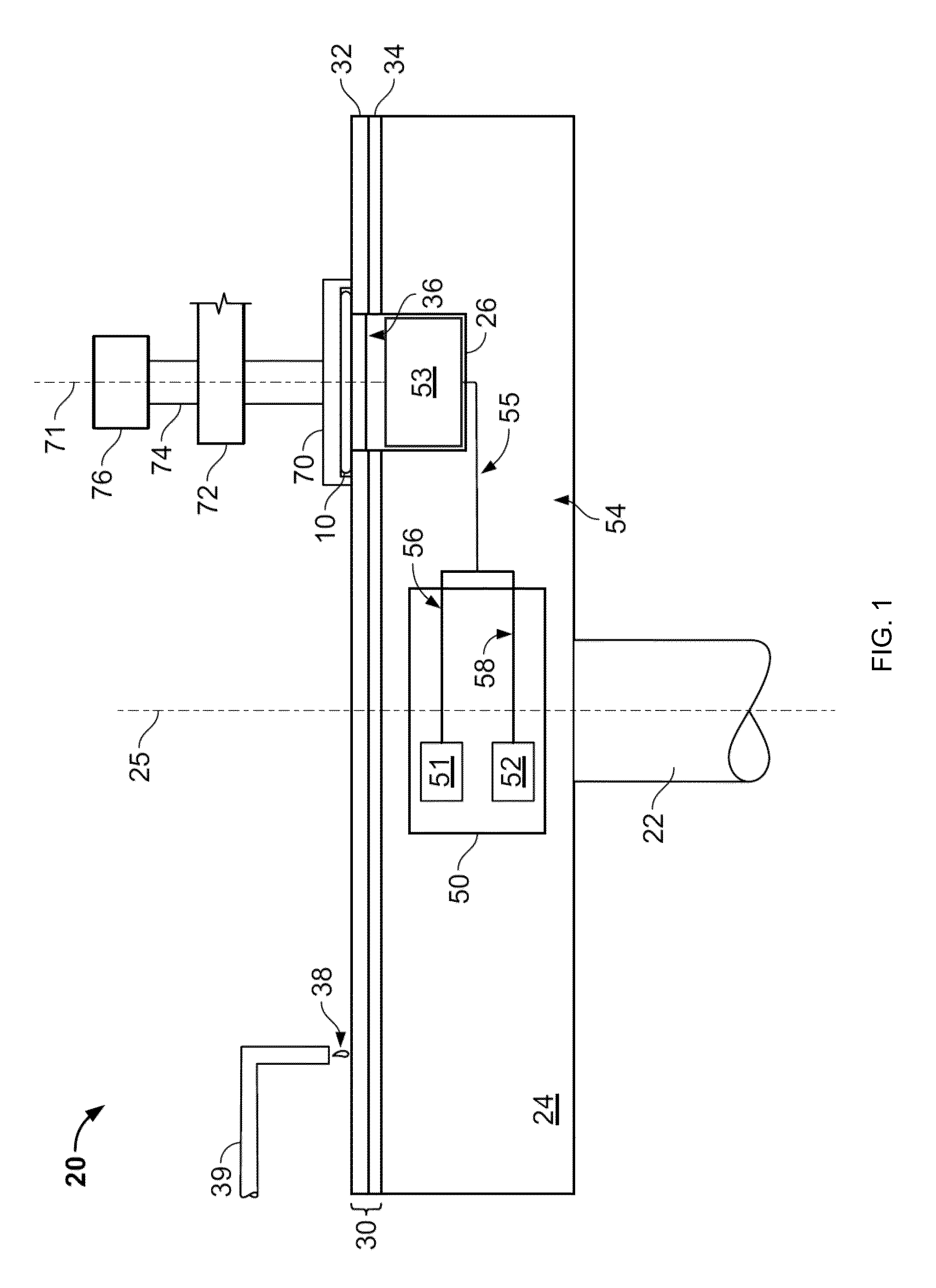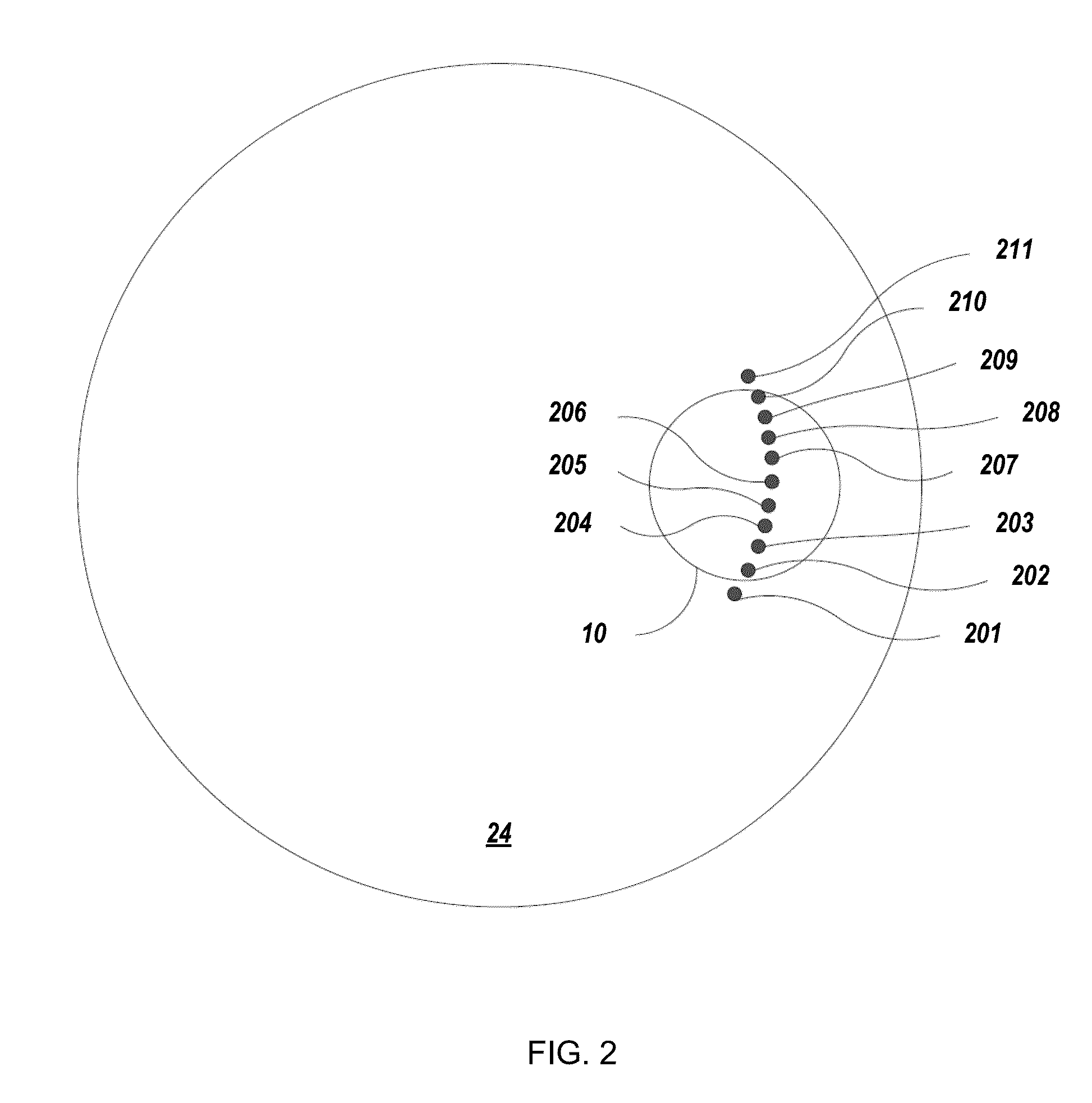Dynamically tracking spectrum features for endpoint detection
a spectrum feature and dynamic tracking technology, applied in the field of optical monitoring, can solve problems such as difficulty in tracking the selected spectrum feature, and achieve the effect of reducing processing resources
- Summary
- Abstract
- Description
- Claims
- Application Information
AI Technical Summary
Benefits of technology
Problems solved by technology
Method used
Image
Examples
Embodiment Construction
[0032]One optical monitoring technique is to measure spectra of light reflected from a substrate during polishing, and identify a matching reference spectra from a library. One potential problem with the spectrum matching approach is that for some types of substrates there are significant substrate-to-substrate differences in underlying die features, resulting in variations in the spectra reflected from substrates that ostensibly have the same outer layer thickness. These variations increase the difficulty of proper spectrum matching and reduce reliability of the optical monitoring.
[0033]One technique to counteract this problem is to measure spectra of light reflected off of substrates being polished and identify changes in spectral feature characteristics. Tracking changes in a characteristic of a feature of the spectrum, e.g., a wavelength of a spectral peak, can allow greater uniformity in polishing between substrates within a batch. By determining a target difference in the spec...
PUM
 Login to View More
Login to View More Abstract
Description
Claims
Application Information
 Login to View More
Login to View More - R&D
- Intellectual Property
- Life Sciences
- Materials
- Tech Scout
- Unparalleled Data Quality
- Higher Quality Content
- 60% Fewer Hallucinations
Browse by: Latest US Patents, China's latest patents, Technical Efficacy Thesaurus, Application Domain, Technology Topic, Popular Technical Reports.
© 2025 PatSnap. All rights reserved.Legal|Privacy policy|Modern Slavery Act Transparency Statement|Sitemap|About US| Contact US: help@patsnap.com



